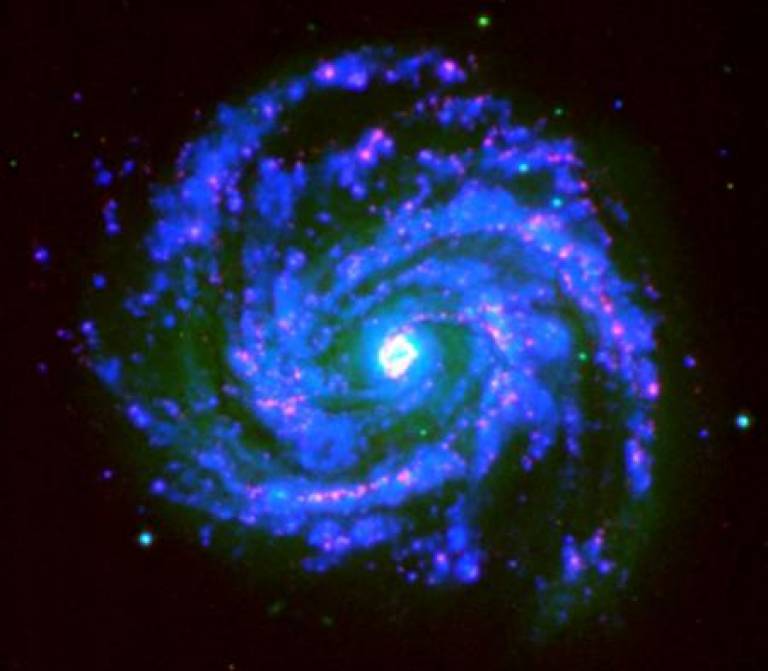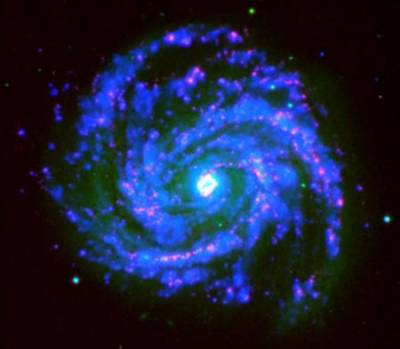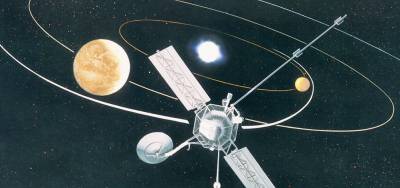Galaxy M 100
24 June 1970

This colour composite image of galaxy Messier 100 (M 100) combines light from three different wavelengths, revealing some of the different processes that exist in galaxies similar to our own.
In blue, ultraviolet light (light with a shorter wavelength to what we see with our eyes) traces out regions of recent star formation, with young stars less than 100 million years old providing much of the light. Newborn stars are hotter than their elderly brethren, and as well as shining brightly in the ultraviolet, they also have a slightly bluer shade when seen by the naked eye. Most ultraviolet light is blocked by the Earth's atmosphere, meaning this sort of observation has to be made in space: the blue component of this image comes from the UVOT camera onboard the Swift satellite. UVOT was built by UCL's Mullard Space Science Laboratory.
The green component of the image is normal visible light, like that we see with our eyes. This data comes from the Sloan Digital Sky Survey, completed from a telescope on the ground in New Mexico, USA, shows where the bulk of the galaxy's stars are located.
Finally, the red areas in the image show what astronomers call 'hydrogen alpha' (H-alpha) radiation, which comes from excited hydrogen gas, in observations made at Kitt Peak National Observatory, USA. H-alpha is a very specific shade of red (which is faintly visible to the human eye). Astronomical images frequently involve narrowly-calibrated observations made in order to isolate H-alpha from other light, as it is a telltale sign of ongoing star formation. The new-born stars irradiate the clouds of gas they are forming from, making them light up like fluorescent signs, a phenomenon seen in the Orion Nebula in our own galaxy.
Image credit: Ignacio Ferreras (UCL Space and Climate Physics)
Links
High resolution images
This image can be reproduced freely providing the source is credited
 Close
Close





